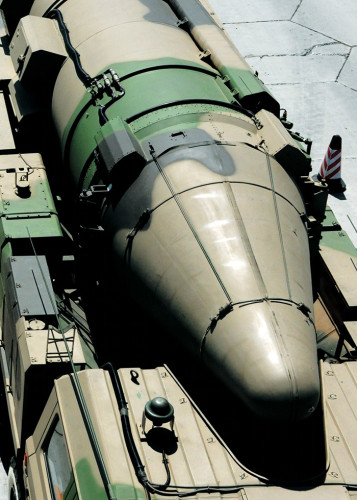Breaking China's DF-21D missile kill chain: US expert
 0 Comment(s)
0 Comment(s) Print
Print E-mail Defense News, April 9, 2013
E-mail Defense News, April 9, 2013
A new report by the U.S. Congressional Research Service (CRS) suggests China's new anti-ship ballistic missile (ASBM) can be countered, and is not, necessarily, the "game-changer"many defense analysts predict.
 |
|
China's anti-ship ballistic missile. [File Photo] |
Ronald O'Rourke, a CRS specialist in naval affairs, argues that China's new DF-21D ASBM, dubbed the "carrier killer,"can be defeated by "employing a combination of active and passive measures"along the ASBM's "kill chain.”
Despite dire warnings by a variety of defense analysts that the U.S. risks losing an aircraft carrier to a Chinese ASBM, O'Rourke said the U.S. Air Force has already "taken [China's] kill chains apart to the ‘nth' degree.”
According to "China Naval Modernization: Implications for U.S. Navy Capabilities,"released in late March, O'Rourke said there are several areas in the sequence of events (kill chain) where active and passive measures can be taken to stop the missile. These include when the target ship is detected and identified, when that data is transmitted to the ASBM launcher, firing the ASBM, and when the ASBM re-entry vehicle finds the target ship.
O'Rourke makes a number of suggestions.
First, the U.S. Navy could do more to control electromagnetic emissions or using deception emitters.
Second, it could also acquire systems for disabling or jamming China's long-range maritime surveillance and targeting systems, destroy ASBMs in various stages of flight, and decoy and confuse ASBMs as they approach their intended targets.
Options for destroying ASBMs in flight include developing versions of the SM-3 Ballistic Missile Defense (BMD) interceptor missile, including the planned SM-3 Block IIA.
The U.S. Navy also should accelerate the procurement of the Sea-Based Terminal interceptor, which is the planned successor of the SM-2 Block IV terminal-phase BMD interceptor.
Other options include accelerating the development and deployment of electromagnetic rail guns, and accelerating development and deployment of shipboard high-power free electron lasers and solid state lasers, says the report.
More could be done to develop an ASBM endo-atmospheric target, which currently appears dead in the Pentagon.
ASBMs could be defeated as they approach their intended targets by equipping ships with electronic warfare systems or systems for generating radar-opaque smoke clouds that confuse an ASBM's terminal-guidance radar.






Go to Forum >>0 Comment(s)